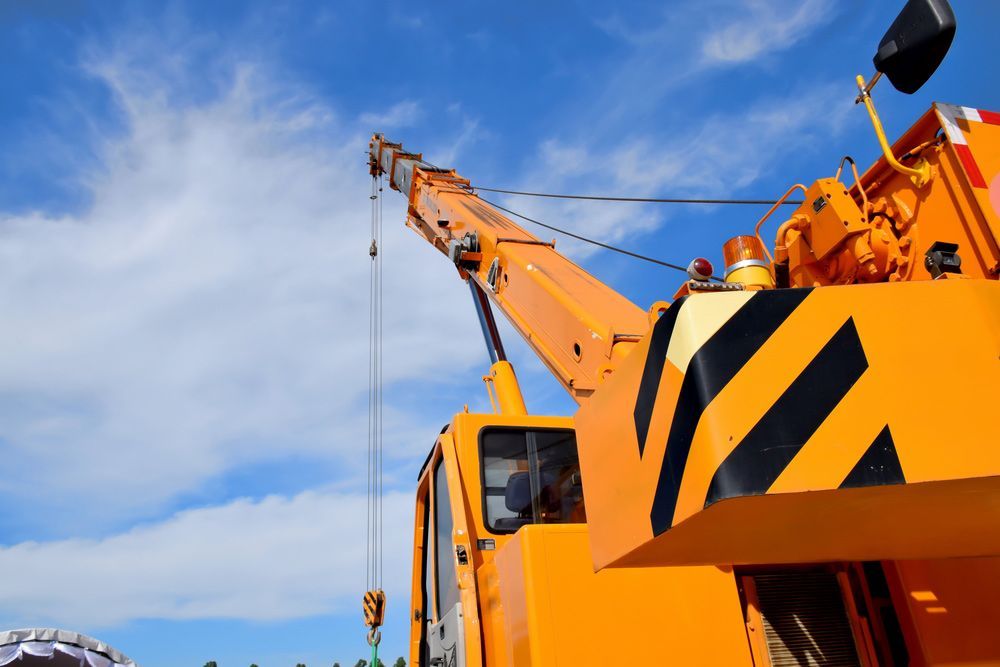FOR CRANE HIRE, CALL : 0400 262 622
For a quote on our mechanical services, phone (07) 5415 1694
Safety Tips For Mobile Crane Operation
Mobile cranes are powerful and versatile machines that are commonly used in construction, manufacturing and other industries. These cranes help in lifting heavy loads, but they can also pose safety risks if not operated properly. In this blog, we will discuss important safety tips to help minimise the risk of accidents and injuries associated with mobile crane operations.
1. Conduct Pre-Operational Inspections
This includes checking the crane's structural components, controls, brakes, hydraulic systems and safety devices. Look for any signs of wear, damage or malfunctions and address them immediately.
During the inspection, pay special attention to:
- Hydraulic hoses and connections: Ensure they are in good condition and free from leaks.
- Wire ropes: Look for signs of fraying, kinks or broken wires. Replace any damaged ropes promptly.
- Boom and jib: Check for cracks, distortion or missing bolts. Ensure that all sections are properly aligned and secure.
- Outriggers and stabilisers: Ensure they are fully extended and firmly set on stable ground.
- Electrical systems: Test all lights, alarms and other electrical components for proper functioning.
2. Verify Proper Ground Conditions
Ensuring stable ground conditions is important for safe crane operations. The ground where the crane will be set up should be firm, level and capable of supporting the crane's weight.
Consider the following factors when assessing ground conditions:
- Soil stability: Test the ground for its load-bearing capacity, especially if working on soft or sandy surfaces.
- Underground utilities: Identify and mark the location of underground utilities to prevent accidental damage.
- Slopes and inclines:
Take precautions when working on slopes or uneven
terrain, as they can affect stability.
3. Establish Exclusion Zones
These zones should be marked and communicated to all workers in the vicinity of the crane. Keep unauthorised personnel out of the area and maintain a safe distance from the crane while it is in operation.
Differentiate exclusion zones based on the type of crane and its operation:
- Swing radius: Mark the area where the crane's rotating superstructure can swing to avoid collisions.
- Load radius: Establish a clear zone around the load path to prevent workers from being struck by moving loads.
- Overhead power lines:
Maintain a safe distance from power lines as required by regulations and industry standards.
4. Rigging And Load Handling
Proper rigging and load handling can prevent accidents during crane operations. Consider the following guidelines:
- Determine the load weight accurately and ensure it does not exceed the crane's capacity.
- Use appropriate slings and attachments based on the load characteristics and weight distribution.
- Inspect slings, hooks and attachments for any signs of wear, deformation or damage before each lift.
- Follow proper signalling methods, such as hand signals or two-way radios, to communicate with the crane operator.
- Avoid sudden movements or jerks during load lifting and positioning to prevent load instability.
5. Maintain Clear Communication
Clear and effective communication is important in mobile crane operations. Consider the following communication practices:
- Standardise hand signals and ensure that all workers are trained in their meanings.
- Use two-way radios or other reliable communication devices to establish clear lines of communication between the crane operator and other workers on the ground.
- Conduct regular toolbox talks and safety meetings to reinforce communication protocols and address any concerns or questions.
6. Operator Training And Certification
Ensure that crane operators hold valid certifications recognised by relevant authorities and industry standards. Also, consider the following factors:
- Ongoing training: Encourage operators to participate in regular training programs to enhance their knowledge of new technologies, safety practices and regulatory changes.
- Familiarisation with specific crane models: Provide training specific to the type and model of crane being used, as different cranes may have unique operational characteristics and safety features.
7. Emergency Preparedness
Establish emergency procedures and ensure that all personnel involved are familiar with them. Consider the following aspects of emergency preparedness:
- Emergency response plan: Develop a comprehensive plan that outlines the steps to be taken in case of crane-related emergencies.
- First aid training: Provide first aid training to designated personnel and ensure that first aid kits are readily available on-site.
- Reporting and investigation: Establish a system for reporting and investigating incidents and near misses to identify root causes and implement corrective measures.
Flexible Crane Hire Services On The Sunshine Coast
At
AMAC Cranes, we believe that proper training, diligent inspections and strict adherence to safety protocols ensure safe and efficient crane operations. Whether you require a crane for a short-term project or a long-term rental, we have flexible options to suit your requirements and budget.
Contact us today to discuss your requirements.
With more than 30 years’ experience in lifting logistics, AMAC Cranes is Sunshine Coast’s premier crane hire business. Select from our extensive, all-terrain fleet for affordable short and long-term rental options.
COMPANY INFORMATION
Crane Hire: 0400 262 622
Mechanical Assistance: (07) 5415 1694
Email: amac@amaccranes.com.au
HOURS OF OPERATION
Crane Hire Opening Hours: 24/7
Workshop: Monday–Friday: 6:00am–5:30pm





